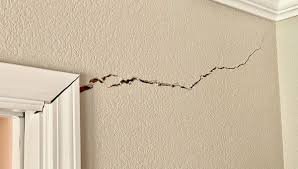Your home’s foundation bears the entire weight of the structure above it. When problems develop, they rarely announce themselves with fanfare. Instead, cracks appear. Doors stick. Floors slope imperceptibly at first, then noticeably. These subtle warnings signal trouble that, left unchecked, can compromise your property’s structural integrity and drain your bank account.
Foundation issues affect thousands of homes annually, yet many property owners miss early warning signs until repairs become extensive and costly. Understanding what causes these failures—and more importantly, how to prevent them—protects your investment and ensures safety for years to come. Site Prep professionals encounter these challenges regularly, and knowing what to watch for makes all the difference between minor maintenance and major reconstruction.
Why Foundations Fail
Poor soil preparation ranks among the most common culprits behind foundation distress. Builders sometimes rush site work, failing to properly compact fill dirt or assess soil composition. When you’re planning new construction, working with experienced contractors who understand https://www.siteprep.com/concrete-foundations/ requirements prevents many headaches down the road. Clay soils expand when wet and contract during dry periods, creating movement that stresses foundation walls. Sandy soils lack adequate support. Organic materials decompose, leaving voids beneath concrete slabs.
Water damage wreaks havoc on foundations faster than almost any other factor. Inadequate drainage directs runoff toward your home instead of away from it. Gutters overflow or discharge too close to the foundation perimeter. Grading slopes toward the structure. Each scenario saturates soil, increasing hydrostatic pressure against foundation walls and undermining the base that supports everything above. The expansion-contraction cycle accelerates deterioration.
Construction shortcuts create vulnerabilities that surface years later. Insufficient steel reinforcement weakens concrete. Improper curing allows premature cracking. Skimping on footer depth or width reduces load-bearing capacity. These deficiencies might not cause immediate problems, but they establish conditions for eventual failure as structures settle and environmental stresses accumulate over time.
Recognizing Problem Signs
Foundation distress manifests through visible symptoms that progressively worsen without intervention:
- Horizontal or stair-step cracks
- Separation between walls and ceiling
- Gaps around window frames
- Basement water infiltration
- Sloping or sagging floors
Doors that previously operated smoothly begin sticking in their frames. Windows become difficult to open or close. Gaps appear where crown molding meets walls. Basement walls bow inward. These indicators deserve immediate professional evaluation rather than cosmetic fixes that mask underlying structural movement.
Exterior warning signs require equal attention to interior symptoms. Foundation walls develop cracks wider than hairline thickness. Mortar joints deteriorate between bricks or blocks. The foundation separates from the main structure at connection points. Soil pulls away from the foundation perimeter, creating gaps. Each signal points toward foundation movement that threatens stability if left unaddressed.
Prevention Strategies That Work
Proper drainage stands as your first line of defense against foundation problems. Installing and maintaining gutters channels roof runoff away from your home’s base. Downspout extensions discharge water at least six feet from the foundation. Grading that slopes away from the structure prevents water from pooling near walls. French drains intercept groundwater before it reaches the foundation perimeter. These measures dramatically reduce moisture-related stress on your foundation system.
Understanding https://www.siteprep.com/foundations/ preparation requirements before building eliminates many future problems. Soil testing reveals composition and load-bearing characteristics. Proper compaction creates stable support. Addressing expansive clay or unsuitable fill during initial construction costs far less than retrofitting solutions after problems develop. Strategic planning during the site preparation phase establishes conditions for long-term foundation performance.
Maintenance vigilance catches small issues before they escalate into expensive repairs:
- Annual foundation inspections
- Prompt crack sealing
- Vegetation control near foundations
- Moisture monitoring
- Plumbing leak repairs
Trees planted too close to foundations send roots seeking water beneath slabs and footers, disrupting soil and creating voids. Maintaining consistent soil moisture around the foundation prevents the expansion-contraction cycles that stress concrete. Addressing plumbing leaks immediately stops water from compromising soil stability. Regular inspections identify developing problems when repairs remain manageable rather than catastrophic.
Taking Action
Foundation problems rarely resolve themselves. Early intervention typically involves less invasive, more affordable repairs than waiting until damage becomes severe. Professional assessment identifies root causes rather than just visible symptoms. Structural engineers provide detailed evaluations and recommend appropriate remediation strategies tailored to specific conditions affecting your property.
Investment in prevention and timely repairs preserves your home’s value and protects your family’s safety. Foundation failures compromise structural integrity, create hazardous living conditions, and reduce property marketability. Addressing vulnerabilities proactively through proper drainage, regular maintenance, and quick response to warning signs ensures your foundation continues supporting your home reliably for decades. The alternative—ignoring problems until they become crises—costs exponentially more in repairs, disruption, and stress.

